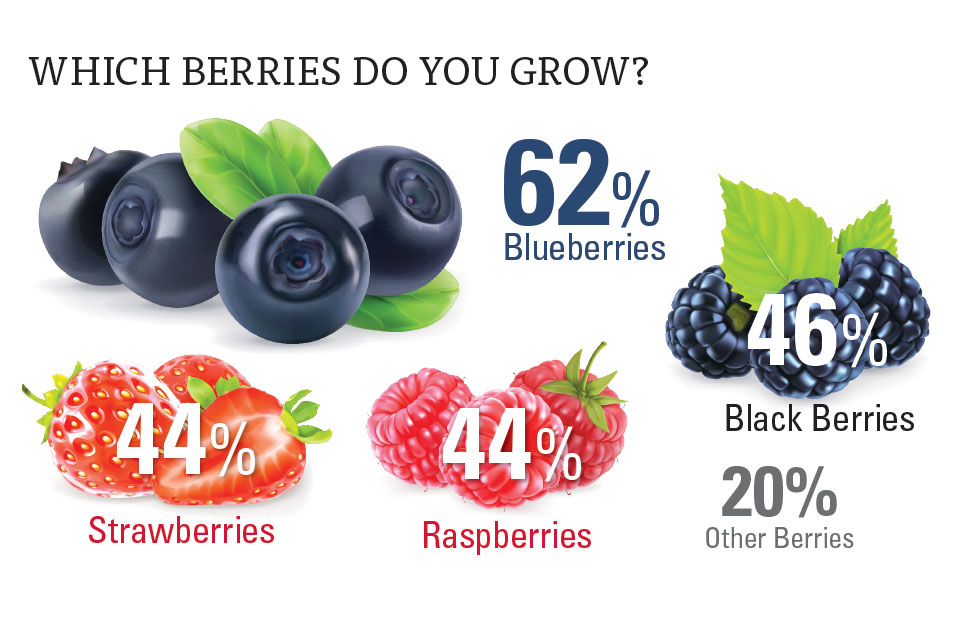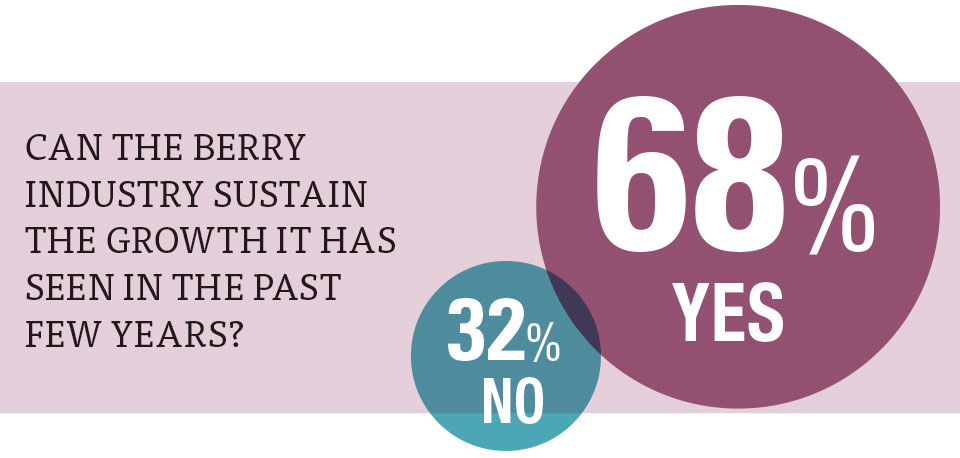Alternative Crops, Growing Demand Fueling Berries’ Future
 Juneberries or saskatoons, haskaps, currants, elderberries, gojis, cranberries, boysenberries, wineberries, aronia berries, and mulberries. While all these seem like small pieces of the berry pie, they do make up about 20% of the berries grown by those who responded to our 2018 State of the Industry Survey.
Juneberries or saskatoons, haskaps, currants, elderberries, gojis, cranberries, boysenberries, wineberries, aronia berries, and mulberries. While all these seem like small pieces of the berry pie, they do make up about 20% of the berries grown by those who responded to our 2018 State of the Industry Survey.
Berries are enjoying a buoying interest from consumers and 68% of growers who responded say this exponential interest and growth can be sustained.
 “Consumer demand remains strong for berries beyond typical berry season,” says a blueberry grower from the Northeast. Another grower from the Northeast says the growth is “sustainable to this point.”
“Consumer demand remains strong for berries beyond typical berry season,” says a blueberry grower from the Northeast. Another grower from the Northeast says the growth is “sustainable to this point.”
“Continued growth will force out older, smaller, less efficient growers — just like always,” the grower says.
A berry and currant grower from the West says the industry is also responding to this growth in marketing.
“It seems that the berry industry is attempting to figure out additional ways to utilize them — juices, snack food products, etc,” says a berry and currant grower from the West.
A blueberry, raspberry, blackberry, elderberry, and goji berry grower from the Southeast says “I don’t believe the full market potential has been realized.”
This optimism is a good energy for the industry, which growers say is challenged by invasive pests like spotted wing drosophila (SWD), labor and harvesting, and pressure from lower-cost imports.
“[Growers] have to move product quickly, some producers lower prices to soon and somehow foreign berries are showing up with extremely long shelf life,” says a strawberry, raspberry, blueberry, and blackberry grower from the Midwest.
“[I’m challenged] to be able to control insect and disease pressure that seems to get tougher every year. And to get more people to eat healthier, better sales,” says a blueberry and strawberry grower from Southeast.
One blueberry grower from the Midwest says the challenge is “Knowing when to stop expanding.” Incidentally, this grower indicated expansion of berry crops is part of the production plan for 2018.
A blackberry and blueberry grower from the Southeast says cultural practices are catching up with the industry: “The berry industry is focused on quality and yield and not improving their soil asset. Remember that the three limiting things in farming are land, labor, and time. Tack on to that most do not have an adaptation plan for their local threats.”










